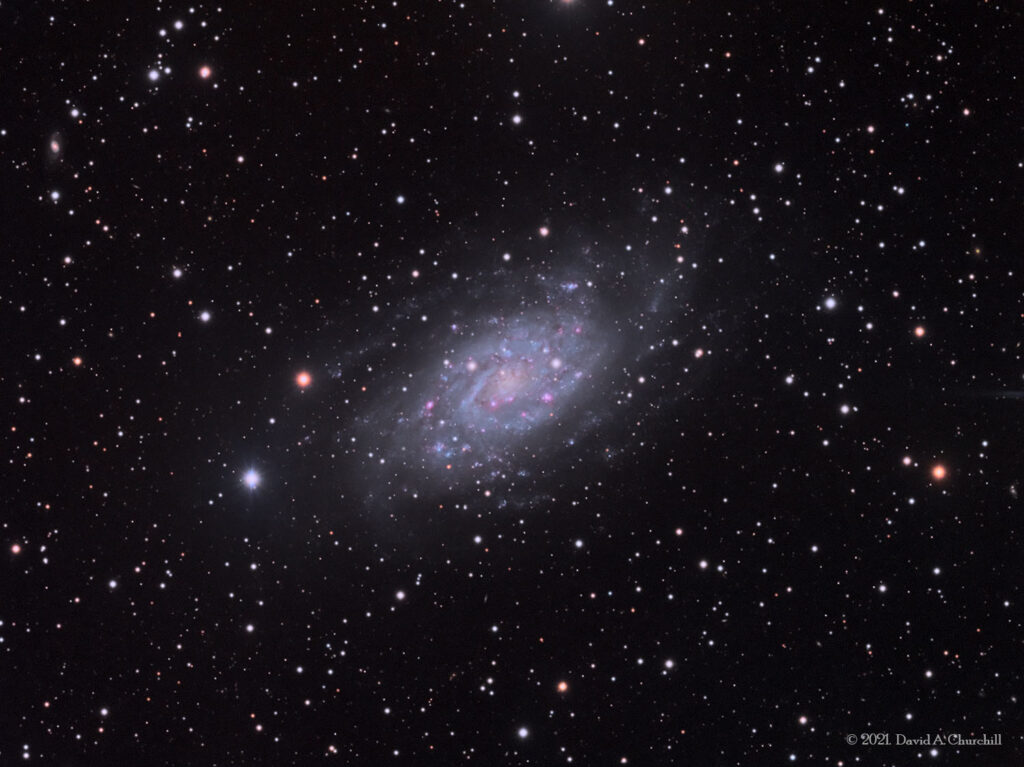NGC 2403 (Caldwell 7)
Intermediate Spiral Galaxy, Camelopardalis
- Description
- Technical
- Links
NGC 2403 (also known as Caldwell 7) is an intermediate spiral galaxy in the constellation Camelopardalis. It is an outlying member of the M81 Group, and is approximately 8 million light-years distant. It bears a similarity to M33, being about 50,000 light years in diameter and containing numerous star-forming H II regions. The northern spiral arm connects it to the star forming region NGC 2404. NGC 2403 can be observed using 10×50 binoculars. NGC 2404 is 2000 light-years in diameter, making it one of the largest known H II regions, even larger than Tarantula Nebula in Large Magellanic Cloud. This H II region represents striking similarity with NGC 604 in M33, both in size and location in galaxy. There have been two reported supernovae in the galaxy: SN 1954J, which attained a magnitude of 16 at its brightest, and SN 2004dj. SN 2004dj was the nearest and brightest supernovae in the past 17 years. It remains nearest and brightest supernova in 21st century. The galaxy was discovered by William Herschel in 1788. Edwin Hubble detected Cepheid variables in NGC 2403 using the Hale telescope, making it the first galaxy beyond the Local Group within which a Cepheid was discovered. He derived a distance of 8,000 light years. Today, it is thought to be a thousand times further away at about 8,000,000 light-years (2.5 Mpc).
Telescope: Astro Physics 175EDF f8.3
Mount: Astro Physics 3600GTO “El Capitan”
Camera: SBIG STT8300
Guider: Mini Borg 50 / SBIG STi
L: 48×10 mins = 480 mins, R: 24×10 mins = 240 mins, G: 24×10 mins = 240 mins, B: 22×10 mins = 220 mins
Total Imaging Time: 19h 40m
Data Imaged remotely over 6 nights during December 2021.
Data acquisition & Processing by David Churchill.
None

